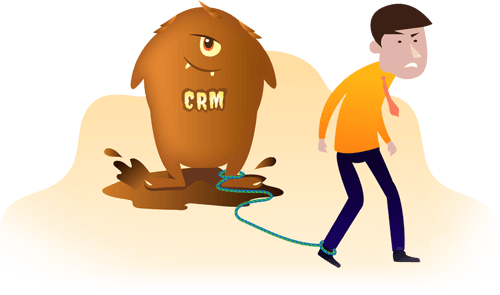Email marketing is conventional, but still, the best method to improve sales for any business.
With a clickthrough rate of 72%, emails can act as a crucial pillar in building your business and bettering the conversion coming through marketing. This statistics is for B2B and B2C collectively, but if we talk about B2B only, the figure will go up only.
Hence, email marketing becomes even crucial when we talk about B2B marketing. However, you will need to streamline your email marketing process the right way for it.
In this article, we’ll elaborate on how you can do it efficiently.
From finding and refining the email addresses which are viable for you to emailing and followup – we’ve covered every tiny thing you might want to learn about while strengthening your B2B marketing process.
Start With A Good Data Source Like Sales Navigator
Sales Navigator is a tool that lets reps find key leads, monitor activities, and the ability to look for similar contacts.
It helps provide optimal data that is actionable which increases leads/appointments.
- Sign up for the free trial. Set up your preferences for things like job titles and regions you want to target.
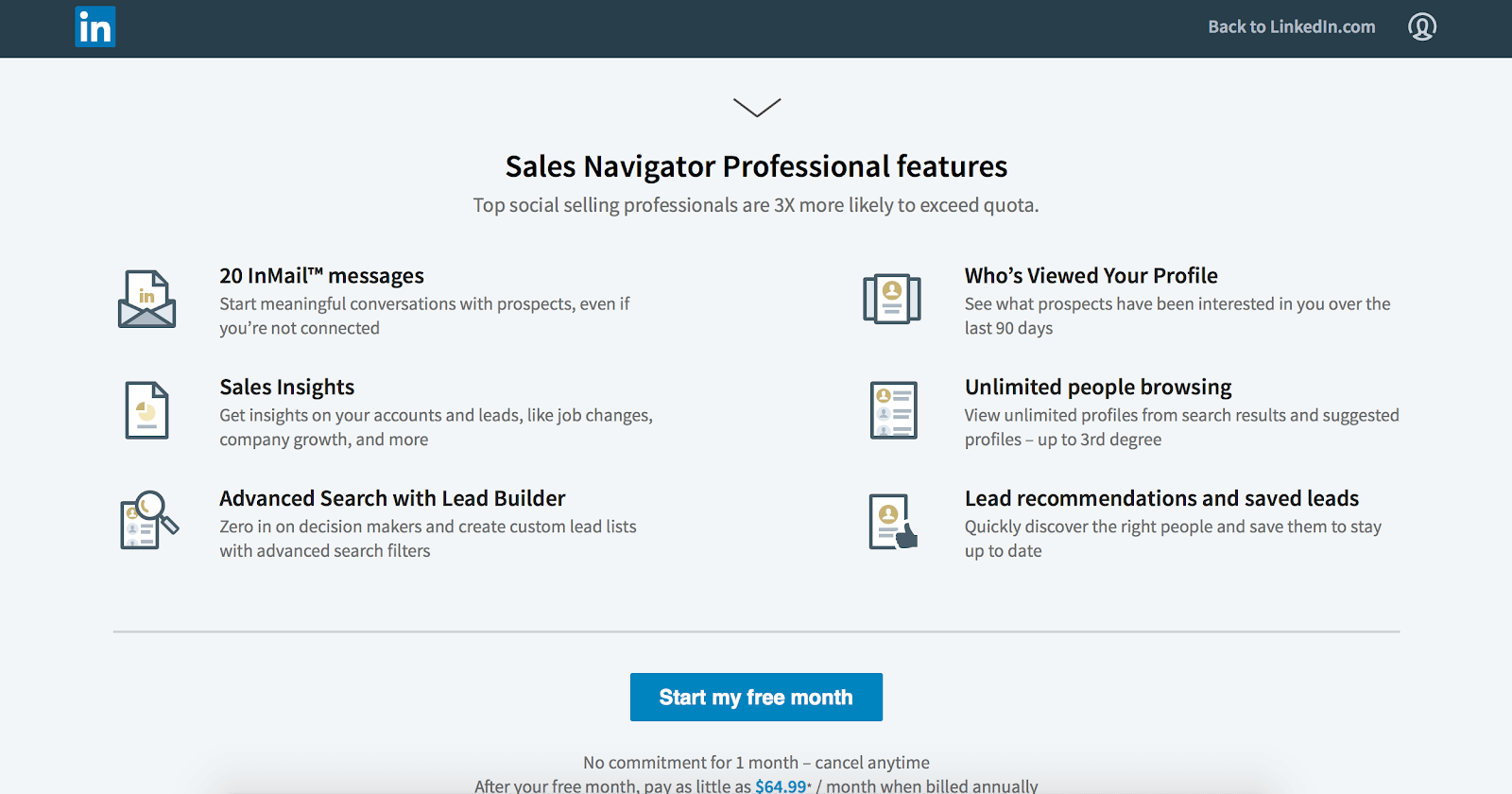
- Save any existing connections as leads. Sync your accounts and contacts
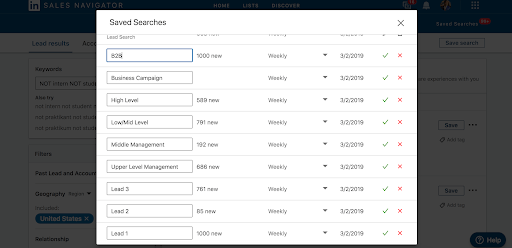
- Find prospects and leads with advanced search filters.
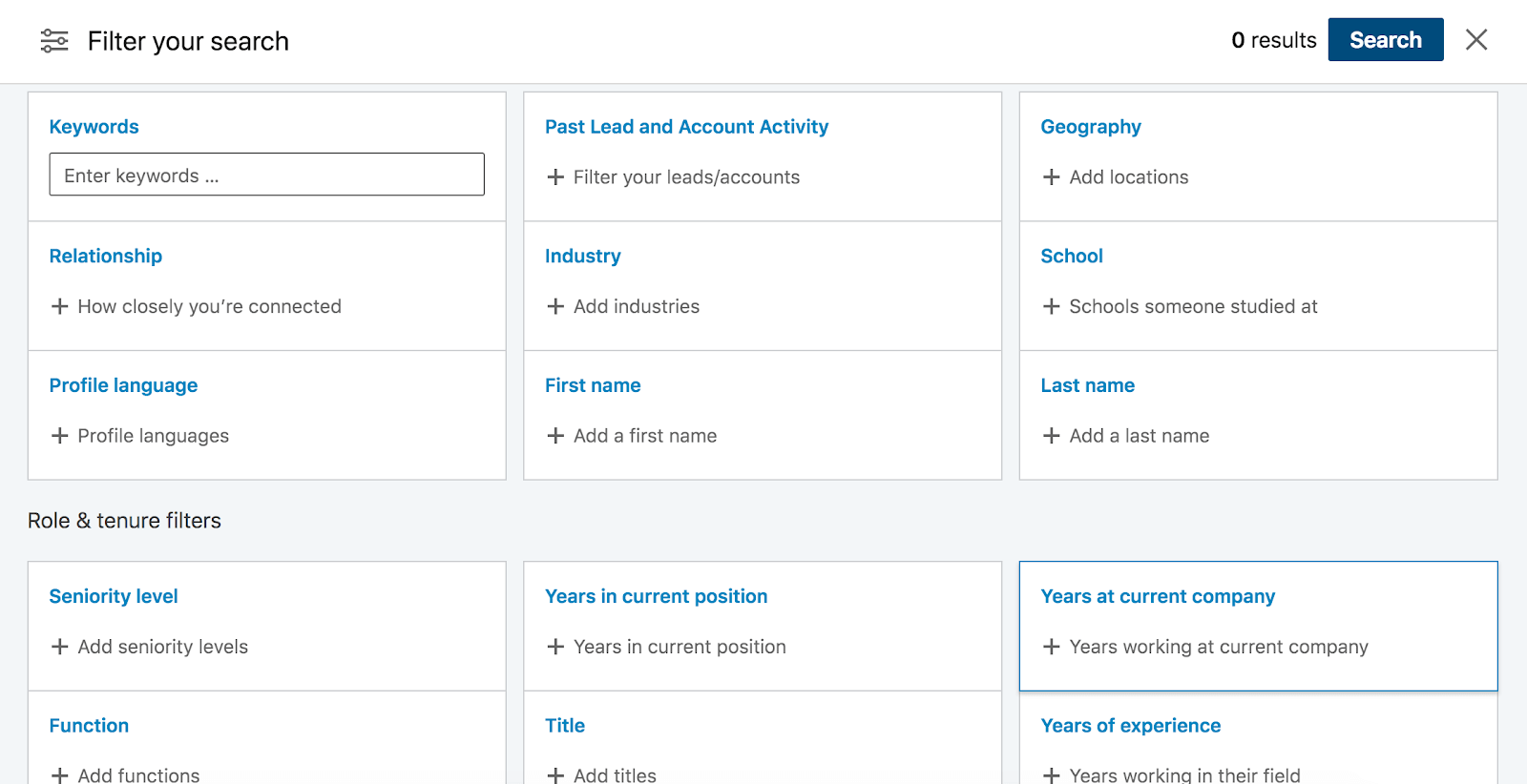
Use Hunter To Get Email Addresses
Hunter lets you get email addresses for any professional in a matter of minutes.
You can hunt down the emails that you want most, filter emails, and after verifying them, save the lead. Here’s how you can search for email addresses using Hunter:
- Enter a domain name.
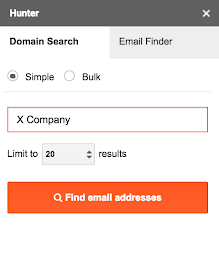
-
Search for the email addresses behind that website.

- Choose from the list of people working for that company and index them based on your scoring and search filters.

Hunter provides you with additional data about the most common pattern of the email addresses of the people working in that organization. For example, the most common pattern of the email addresses of a domain named companyhub.com could be: {first}@companyhub.com
But remember Hunter provides a limit of searching about 100 email addresses per month when you opt for a free plan.
Verify Your Emails With Neverbounce
Neverbounce is a tool you can use to verify emails in order to prevent bounces.
Verifying emails will make it easier to reach sales targets, weed out those that are not valid and allow sales reps to focus only on valid emails.
Rather than spending time writing emails, sending them out, and having them bounce back, you can verify email addresses before you invest any time or effort in crafting cold emails or follow up responses. Follow email marketing best practices and prevent bouncing of emails by following these steps:
- Get set up with Neverbounce by visiting their website.

- Use the request by Neverbounce by substituting your company access token and the email that you want to be verified.
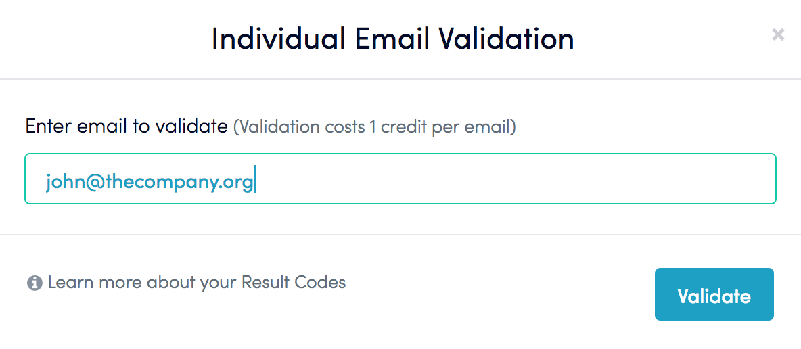
- Wait for the response which will show you the parameter indicative of the email status. They might say that the email is valid or not.
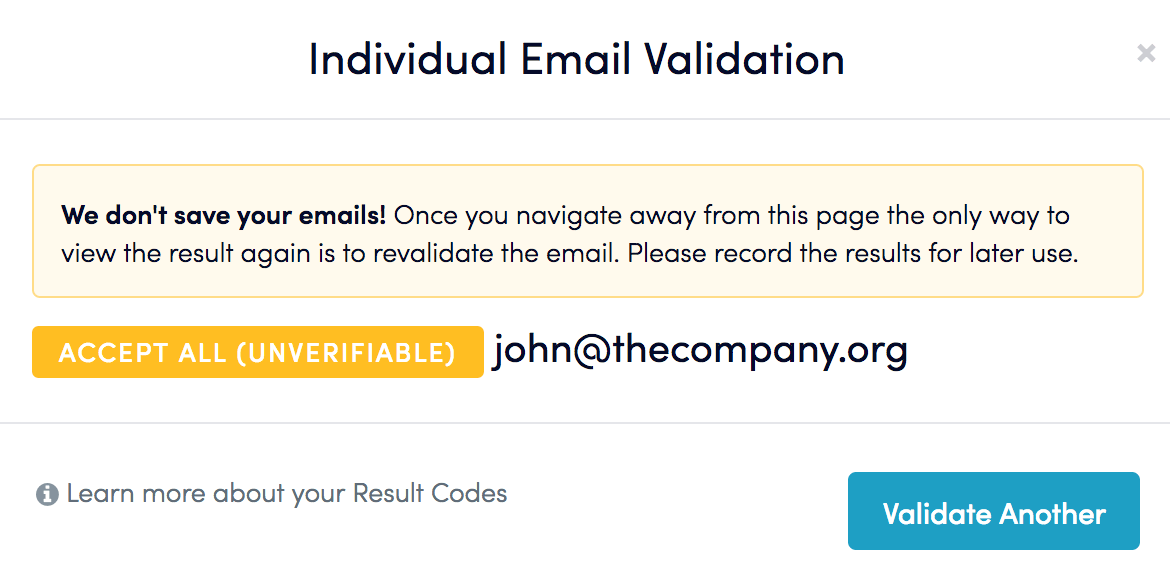
Use Dux-Soup to Gather Emails
Dux-Soup is a tool for automating outbound sales processes.
You can automate profile visits as well as messages when using Dux-Soup with Sales Navigator so that your time is better spent on the more creative side of sales, nailing those appointments, and completing the sale rather than focusing on manual tasks.
It also allows you to scrape emails that can then be used for B2C and B2B email marketing campaigns. Using this you can upload your custom list, capitalize upon the user-friendly interface, and manage your leads more effectively.
- Build your list with theauto visit profile and scrape extensions.

- Generate an instant list of potentials.
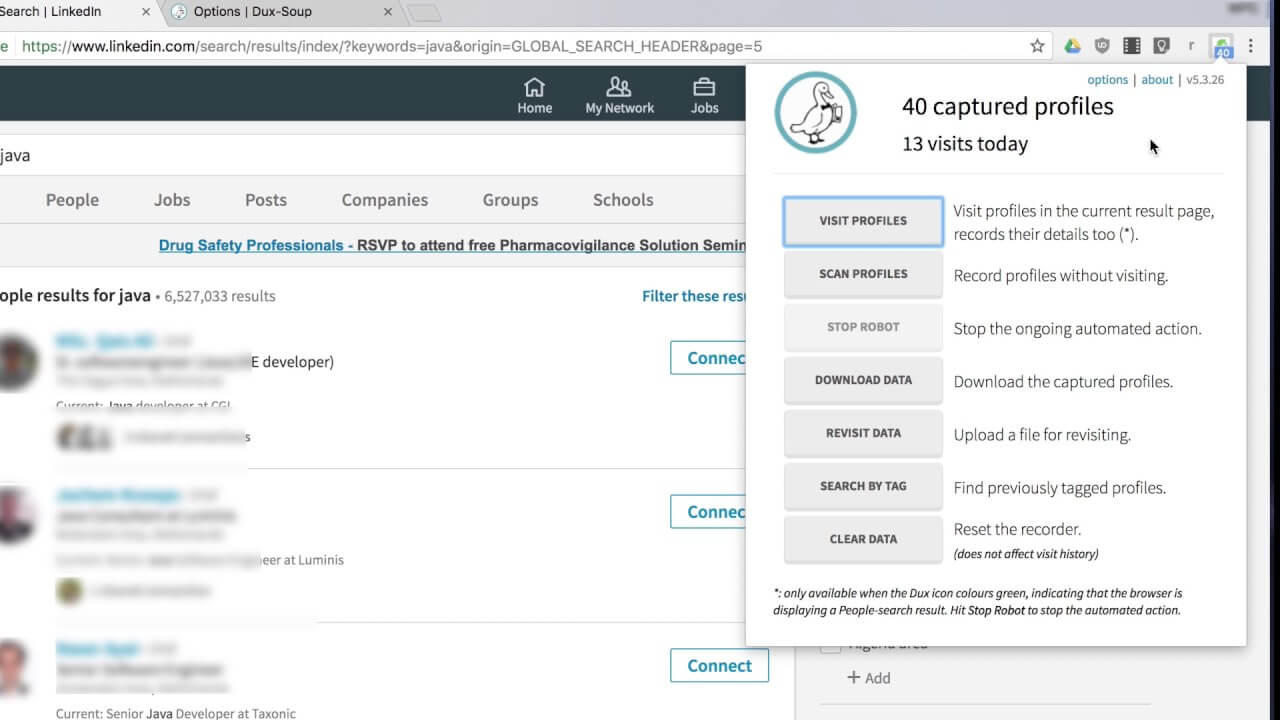
- Reach out with your cold emailing.
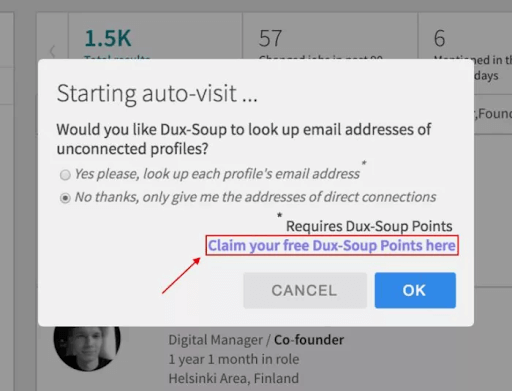
Use Scheduling Software And A Conference Line
With scheduling software, you can book appointments for your sales funnel in an automated fashion.
People used to try to call and email, going back and forth in an attempt to arrange a suitable time.
Now you can let people just pick a time they prefer and you’re done. It’s that fast.
You can get prospects to pick a time that works best for them without going back and forth on times and dates.
They can literally just see a calendar and pick a day/time they want.
You don’t want to waste time talking to them about this, and they don’t have to feel obligated to explain why they are busy or when.
- Decide the length of time for appointments and make that the standard, such as 15 minutes or 30 minutes.

- Set up the date range, specific months or weeks out of the month, for clients to choose.
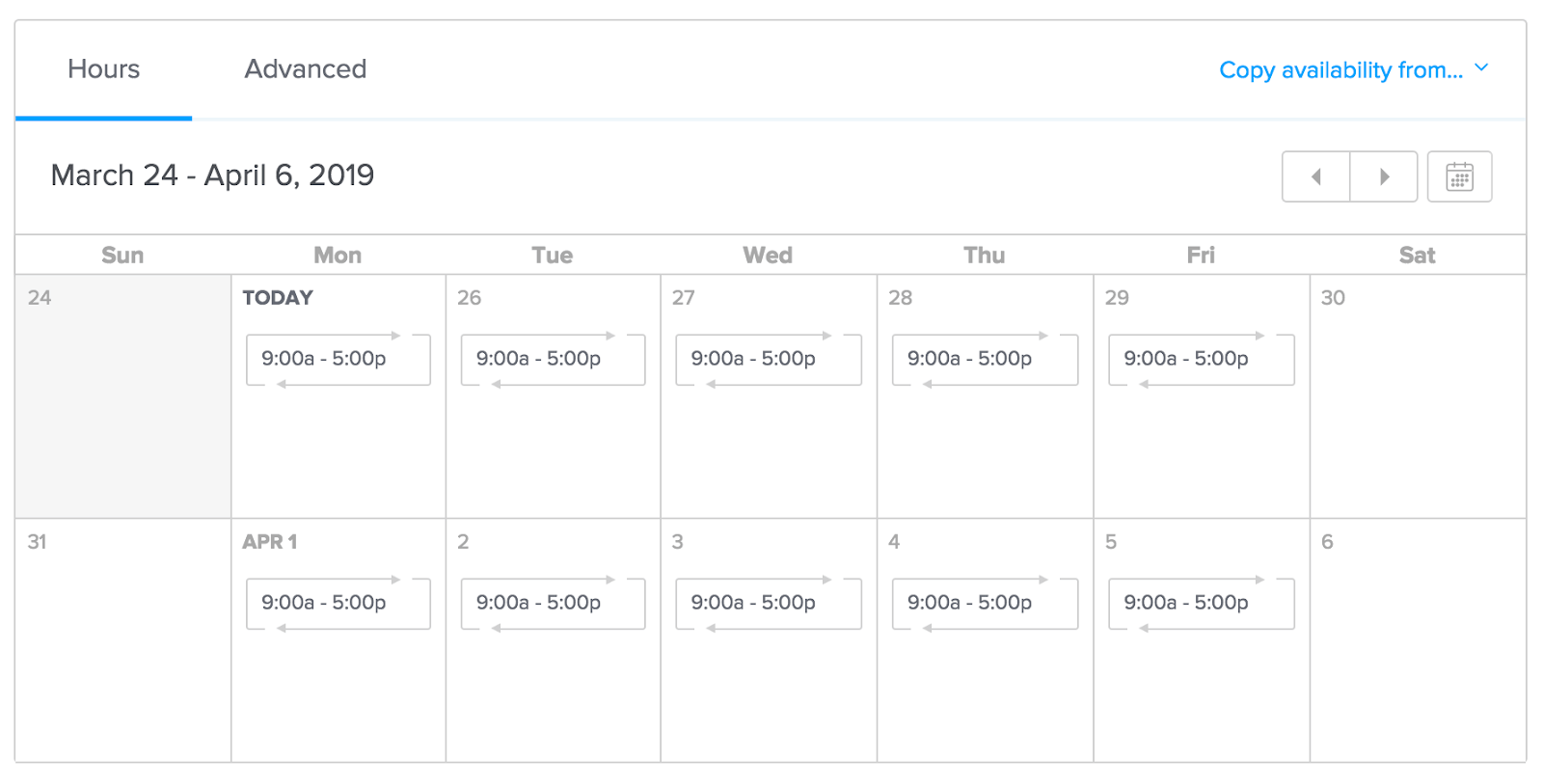
- Add your time zones and any available intervals, such as your in-office sales hours when you are free to make phone calls.

Use Woodpecker to Automate Your Outreach
With Woodpecker, you can send cold emails and follow up emails automatically. One of the most important steps in B2B email marketing best practices is to automate your campaign as doing things manually is the biggest time waster for a sales team.
When you have crafted the perfect prospect responses, you should be able to send them whenever is appropriate, meaning, whenever you receive a reply.
But you don’t want to stop your sales efforts in the middle of the day because you suddenly received a reply. Instead, you can automate all of that and redirect your time more appropriately.
These are the steps you should follow:
- Automate the initial email.

- Set the number of days after the initial email for the automatic follow up.

- Establish parameters for reply detection.

Write Great Email Copy With “AIDA”
This is a model of writing that breaks down the key components you need to include: attention, interest, desire, and action.
It is the most effective way to persuade when using the written word. It allows you to create real urgency, relevance, personalization, pique curiosity, and provide offers that capture the attention of your audience.
There are many available resources that describe multiple options and steps you have at your disposal for this process. By regularly reviewing the steps, learning more about each one, you will get much better at creating an email marketing strategy.
Eventually, you can implement these email marketing best practices into templates too so that you craft the perfect sales message and then use it repeatedly to gain appointments. Here are a few steps to get you started:
-
Nail the headline by grabbing attention and sparking engagement. This is where you create that urgency with your diction. It is where you personalize the emails, especially in the subject line, where you make your content relevant to their industry or location or even shopping habits. It is also where you allude to something that captures their interest.
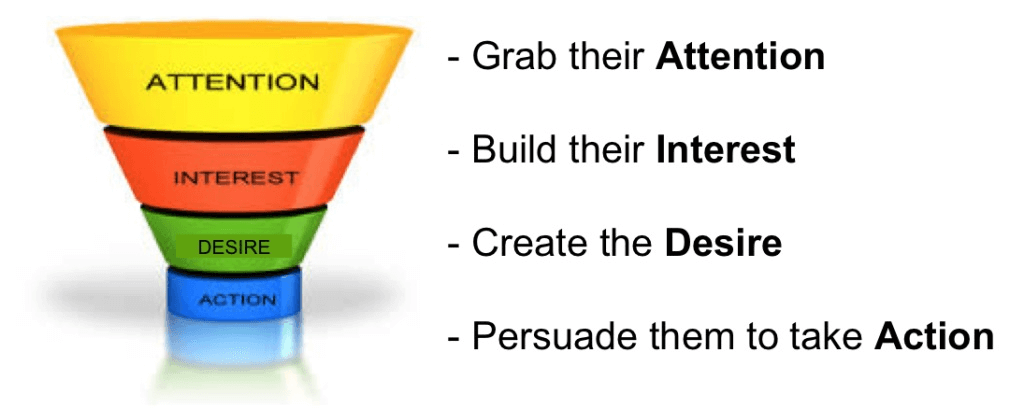
- Hook readers with the opening paragraph, giving them a reason to care. This might be done by telling stories, addressing pain points, using humor, and including facts. Then stage desire and empower the readers to focus on the benefits. You want to focus on the things that they get out of your solution, not the features of what you are offering.
- Create a simple actionable CTA, i.e., “book an appointment” or “when are you available to meet next week”
Put Your Contact Info Into A Great CRM Like CompanyHub
CompanyHub CRM is a customer relationship management system. This system is a place where all sales data can be stored and presented in an easy-to-understand format.
Moreover, it allows companies and individuals to monitor the progress of prospects and sales, in an effort to optimize selling.
Tech News World found back in 2012, and it remains true till today, that using a CRM will increase sales by 54%. Today, 65% of those who use a mobile CRM reach their sales quotas too while 78% of reps who don’t use it will end up missing their targets.
Additionally, it is a safe way to store data centrally. This includes prospect data, activities, and schedules all in one place and that one place can be accessed on the go from many locations by any sales reps
With a proper CRM you can optimize sales plans, generate schedules, and make sure no prospect gets ignored. You can also generate activity reports for management.
Using a CRM you can segment data and find the most valuable opportunities.
Below are some steps on how to effectively optimize sales plan using CompanyHub CRM:
- Add your sales reps to the CRM. Once you have implemented the system they need to know how to adopt it.
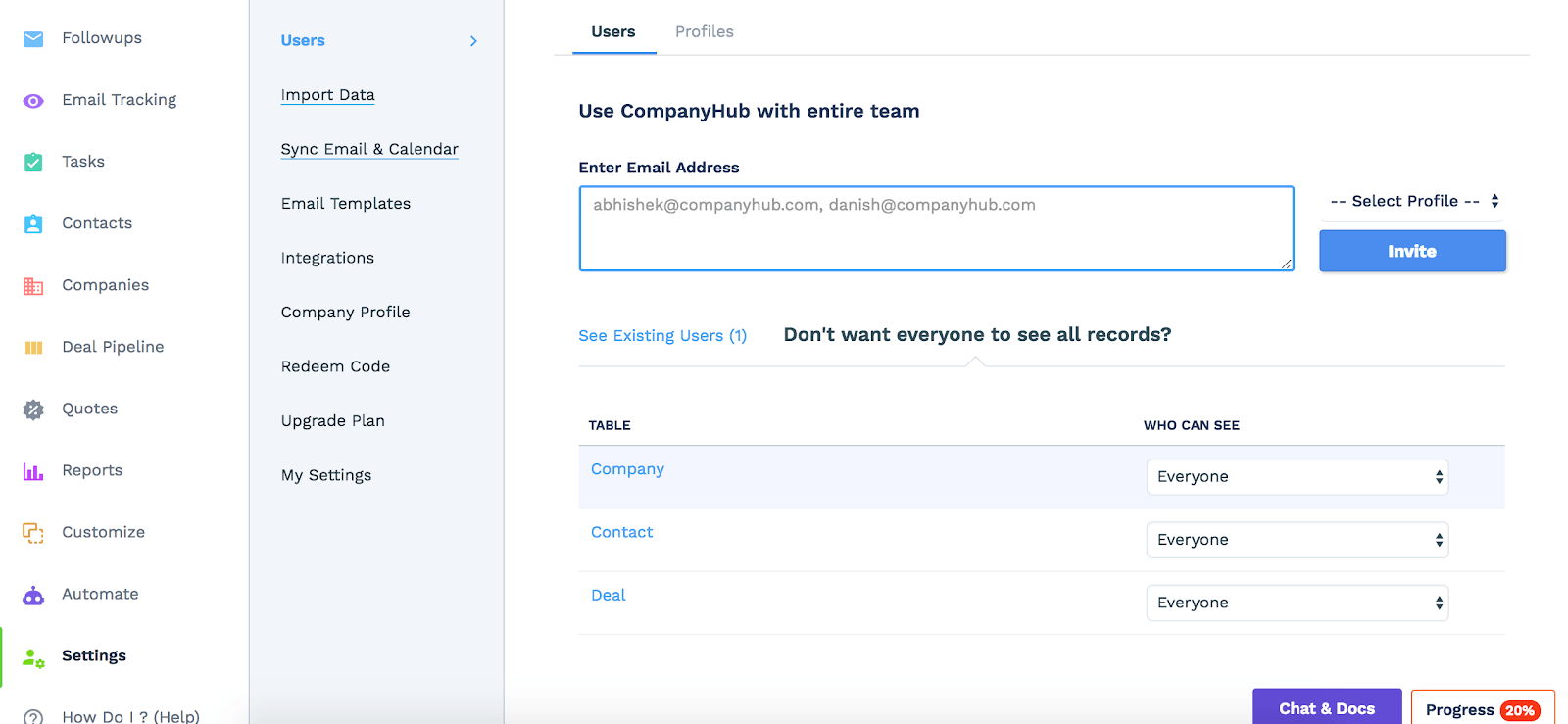
- Customize the settings. The CRM you use should reflect your sales process which will differ for each company. So, you need to create custom properties in which you would store sales data. This will include the stages of your pipeline and client’s data.
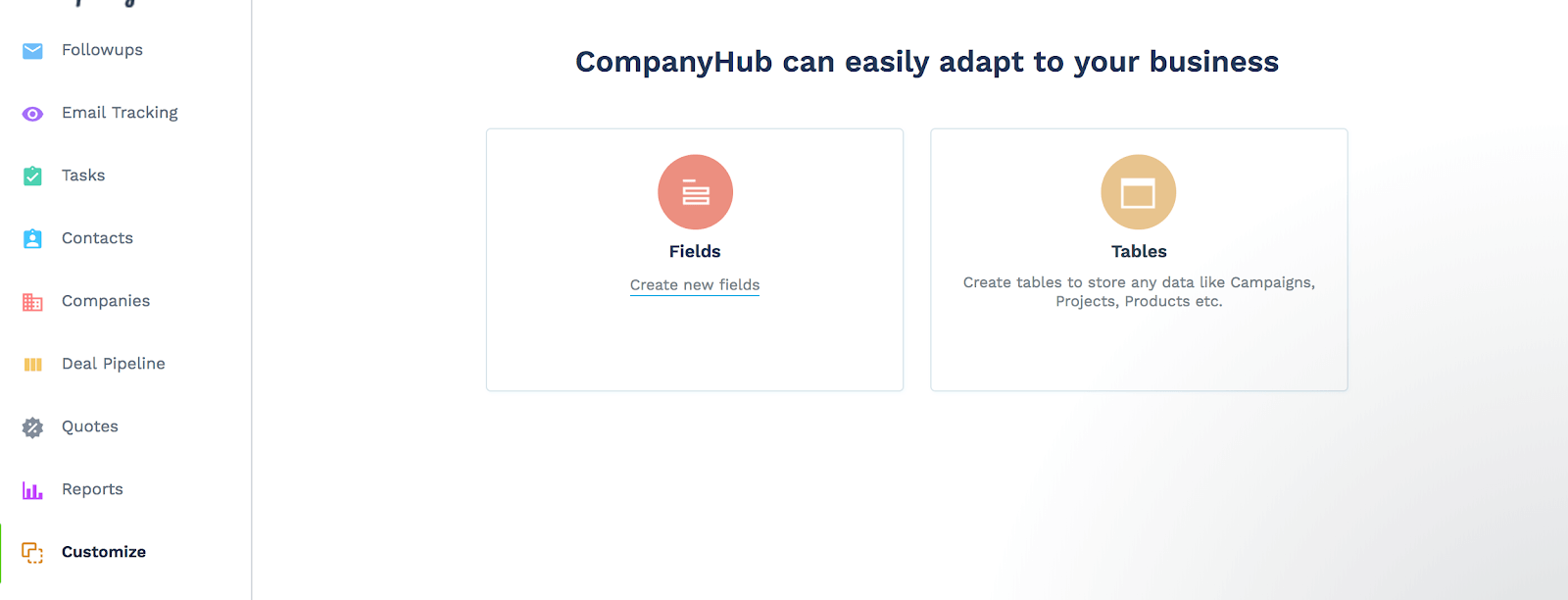
- Integrate your deals, your companies, and your contacts. You can generally upload a CSV file and it will seamlessly integrate. If you are using other tools, integrate them as well.

Use A Text To Template Your Responses
This is software that lets you turn a text string into a text template, perfect for sales use. Essentially you can use it to create templates that are easily added to responses anywhere you might be working online.
In effect, if you are in a sales platform or in your email and you need to generate a response, one you may have already written to another prospect, you can use this as a form of shorthand to locate templates you have previously written and upload them to the current media you are using.
The biggest waste of time most sales reps experience is due to doing repetitive tasks manually. When you don’t have to do them manually and when you don’t have to write each response out time and time again, you can focus more on the things that matter like nailing those appointments. It expedites productivity. You can follow these steps to easily template your text responses:
-
Save desired text snippet into the text program.
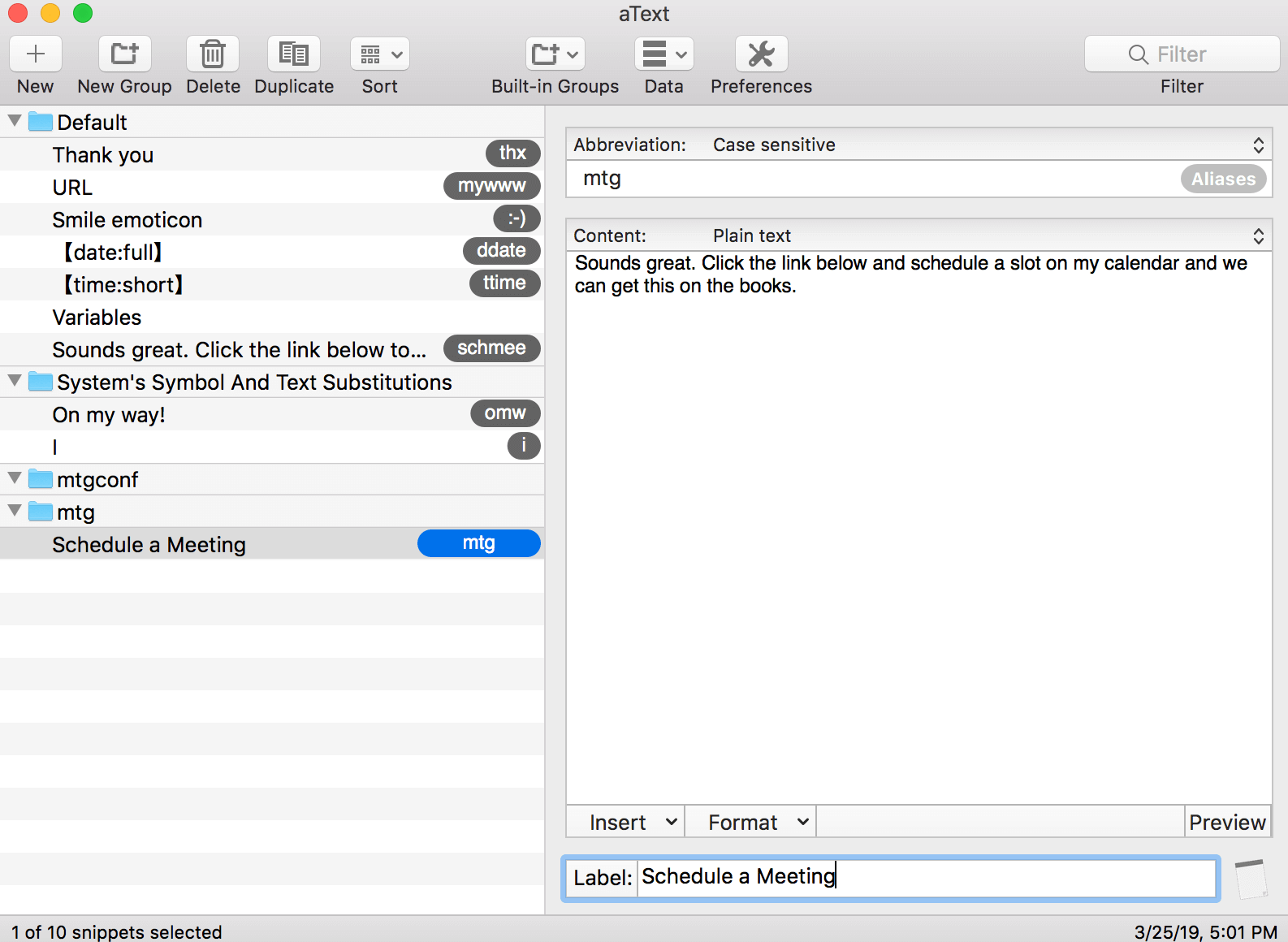
- Start by typing in your text speak, such as “mtgconf” anywhere on your computer.
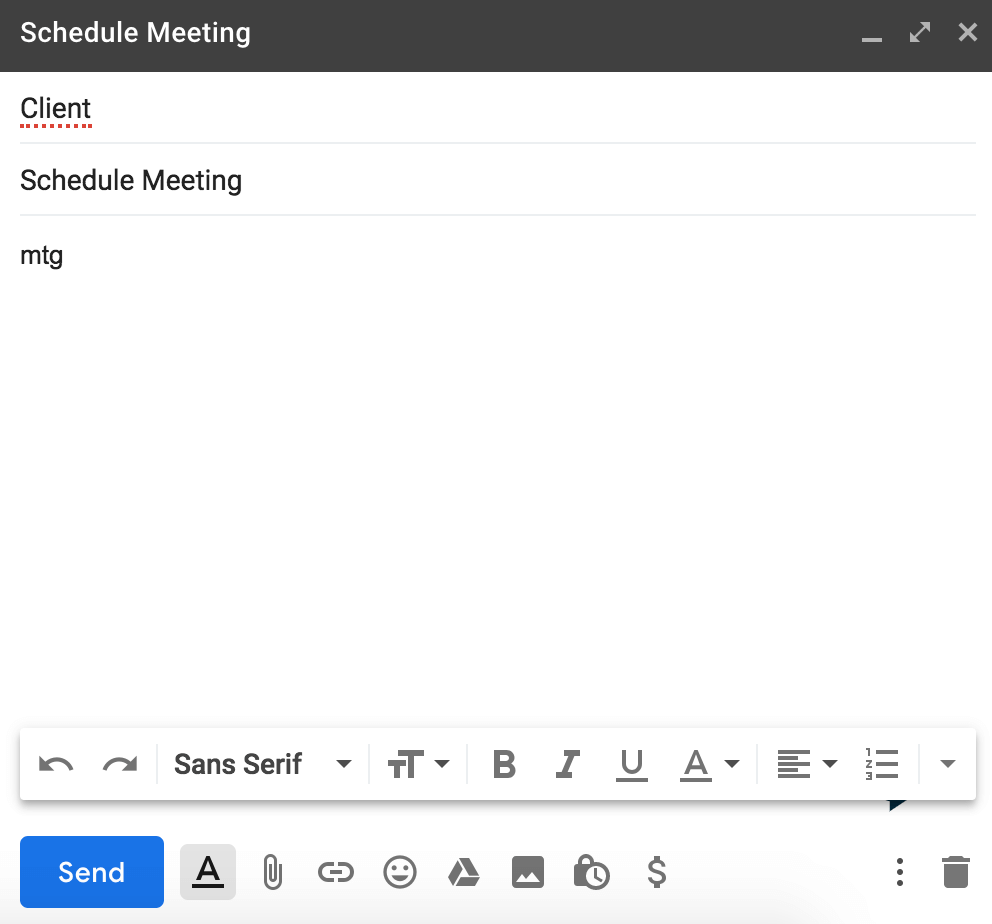
- Review the area as it becomes populated with a meeting confirmation email you may have typed out previously.

- Send the emails in record time without having to reformat content.
How To Write An Email That Will Surely Get A Reply?
If you are like most sales people, your “personal” sales email might look something like this:
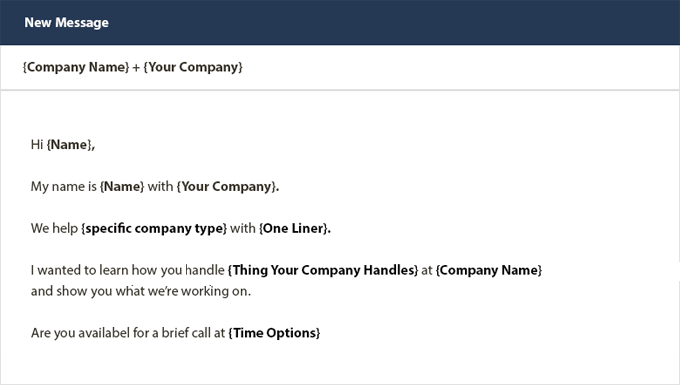
What do you feel is wrong with the above email template?
There’s a company name, contact name and company type mentioned in it. Isn’t this a personal mail?
No.
What do you think is missing?
It might have been considered a personal mail when email marketing was in nascent stages or when social networks didn’t make so much information publicly available.
Nowadays almost every company that does email marketing, gathers and uses this information in emails. Your prospects receive hundreds of such emails and with time they tend to ignore such mails.
You need to go beyond this basic “personalization” to get their attention and interest.
Here’s an example of a successful personal email that I tried with one of my friends to win his potential prospect:
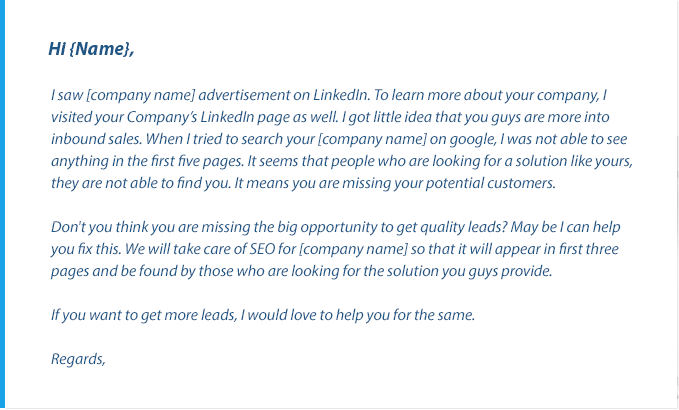
You can also follow these B2B email marketing best practices and write such attention grabbing emails and get more responses.
To catch a prospect’s attention, you should strike with an incidence or a thing that is very close to them or done by them. This will help to spark your conversation.
This sounds complicated right? But it’s NOT.
Increased use of social media, online communities, blogs, and the business website makes it really simple to guess what is happening with your target person and analyze if it’s a better time to talk.
It is important to understand these changes, why they are happening, what buyers expect, and how you can adapt your sales and marketing messages to match the needs of the prospect.
Building blocks of any email are subject, body, and closing. Let’s see how you can have a personal touch to every part.
Although the subject comes first in email writing, I think about the subject line in the end. So will discuss it in a few moments.
Sales Email Body
The email body can be divided into 2 parts after the initial salutation.
1.Conversation Spark:
Generally, people start by introducing themselves. It’s a good etiquette to give your introduction first, but unfortunately, it doesn’t help in the first email unless your brand is already known to them.
You are a complete stranger to the person you are talking to, so you completely miss an opportunity to get their attention at the beginning if you start with your intro.
So how to start?
There are mainly two types of conversation sparks
Incidental:
In this case, generally you came across or find some incidence which could be Webinar, Blog Post Comment, News, Community Conversation, Tweet, Meeting, Live Event, etc.
It’s very important that you refer to this incidence straight at the beginning to get their attention.
For example: Let’s say, you have a CRM software which perfectly suits your account based selling. Also, you are attending a webinar about ABS on Sales Hacker community, and you find someone asking what are the best/preferable tools for ABS.
It’s your chance to take this opportunity, and reach to the questioner with conversation spark like the one below:

This 2 line opening can immediately grab their attention as it shows, you know the person you are talking to and have a common interest as he/she has. They will be more excited to read the next things, as they are actually looking for it.
You can similarly use other incidents to get the conversation started.
This is the ideal case for which SDR’s always hope. Because this effortlessly makes a personal and effective email opening.
Non-Incidental:
We know that ideals are not spread everywhere. And it becomes really difficult to find them daily.
So it’s not always the case that you find someone talking relevant to your business.
Still, you have to find a personal touch in email and the only thing that you have with you is prospect’s LinkedIn profile.
So how can you make the most out of the LinkedIn profile? How can you give a personal touch to your conversation only with Linkedin profile?
Enlisted are the things that a Linkedin profile can give you:
- Name
- Company
- Website
- Position
- Professional Journey
- Quality
- Skills
- Colleagues
- Recent Posts
- Geography
- Interest/Summary
- Educational Background
If you put all this information together, you can write a good conversation spark. Here are some examples that I have tried. You can refer to the above-enlisted things to get a basic idea of how can you write a conversation spark.
Writing to a Founder/CEO:

Writing to a Quality analyst:

Writing to a Product Manager
2. Problem:
Once you all set with your conversation spark, the next thing that should be included in the email is the problem. This is the soul of an email and if you nurture it in the right way, you are the winner. Problem description should consider following 2 stages and identify the appropriate one.
Stage1: Prospect is not aware of the problem
This might happen that you can clearly see the problem with the prospect, but they are not aware of it or never noticed it. In this case, you can refer to some relevant case study and make them realize that they have a serious problem. And it’s your responsibility to help them understand it better.
For example: Suppose you are working for a company that has a product of creating online survey forms. You want to deliver this application to online food delivery company and they don’t have feedback collection forms on their site:

This type of problem definition normally works better with Non incidental conversation spark.
Stage 2: Prospect knows the problem
If a prospect is looking for help about the service you provide, there might be chances that they already realized the problem and looking for the solution. In this case, you can mimic the problem in their words and try to help them understand the problem/solution in a better way. As you provide the service that they are looking for, it is always better to present yourself in commanding/knowledgeable person’s role who can understand their problem better and here to help them.
For example: As we have seen earlier, that if someone is asking for the best tool for ABS, it means they realized the importance of ABS. If you think your tool is the best fit you can describe this problem step like:
Closing of Sales Email
This part should clearly mention an action that you want a prospect should take. It’s always better if you provide some valuable and useful tip for them instead of asking for a demo or to buy your product. I prefer to ask for the next conversation that should not always necessarily about business and focuses on realizing them that, I am here to help you.
You can also point to a few samples that can prove your idea and give some value to the prospect.
For Example :

Subject
The subject really impacts your open rate and if you learn the art of writing your subject, you are more likely to win. Because all your efforts will be meaningless if you can’t put a proper subject line. A study says that personalized subject lines are 22.2 % more likely to open.
So how can I write effective subject lines?
It’s actually very simple.
Generally, questions and referrals work better for email subject. So just ask questions about the topic of their recent interest or add the name of a mutual person.
ALERT: Don’t Get Over Personal
One point that goes against email marketing best practices is getting very personal on email. Although I suggest writing a personal email, it must be within professional boundaries and should not look over personal. Always avoid using smiles or personal question unless you get some conversation going.
For example, you can’t ask a person “What you had for lunch?” in the very first email.
Expected Results And Efforts
If you follow this strategy correctly, you can expect very high-quality results than your bulk outreach. Here are some results that I have experienced from this strategy and so you can.
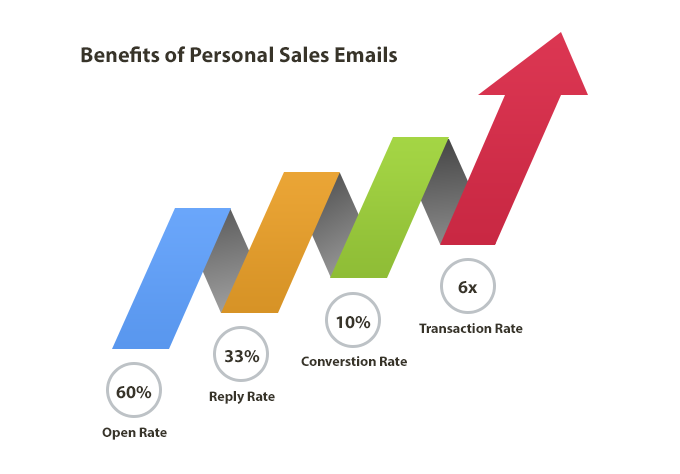
Although the process looks a bit time consuming, believe me, it’s totally worth it.
For beginners, you can start with 5 prospects per day and try to increase as much as you get involved. On an average 10 prospects can be considered as good target, and it can give you more than 200 customers per SDR per year only with email outreach. As long as you follow this strategy, it always keep your interest and motivation with overwhelming results.
Now It’s Your Turn to Write Email
Now it’s time to apply all the B2B email marketing best practices and create your own email.
To help you understand better, we have created many email templates, for many industries.
Here’s a link for you to download free email templates:
How To Write A Follow-Up Email When Your Prospect Doesn’t Respond?

If your sales process requires talking to prospects over email or on the phone in order to close the sale, you know that at a certain price point prospects don’t typically buy on the first interaction.
You have to do several email exchanges and/or calls before you get a sale. Sometimes during this process, prospects will stop responding to your follow up attempts and go “radio silent.”
Every sales veteran knows that time kills deals. You have to get your prospect’s attention and constantly move the sale forward to win a deal. Don’t let your sales prospecting go to waste.
This article will help you in writing a Follow-Up email after no responses from your prospects and give you several different tactics for improving your follow up campaigns. This will help you get the attention of a cold prospect and close the deal.
When Your Prospects Don’t Get Back to You
Many sales stop without a direct ‘no’. Often a sale is lost when a prospect stops returning your phone calls and emails. This can be really frustrating for anyone who has spent a lot of time and effort trying to win a deal.
If the sale isn’t going forward, it’s going backwards. The more time that passes without another engagement with your prospect, the greater the chance that you’ll lose. Getting a response from them is your top priority at this stage in the game.
Why Your Emails Are Getting Ignored
It can be difficult to determine why a prospect isn’t responding to you. It could be that they can’t get approval to buy your product or service, the timing isn’t right within their company, they are trying to secure more budget to pay you, or they may just be really busy and it slipped their mind to respond to your follow up attempts.
There’s plenty of different reasons why this could be happening but the underlying cause of the silence is that you aren’t giving them a compelling reason for them to respond to you.
Most follow up attempts only serve to help the person who’s doing the outreach. The only way to give your prospect a compelling reason to respond is to offer them something that they want.
You have to think about what you can offer to the prospect that will get them to take action.
Without offering a compelling reason to respond, the prospect will most likely take the path of least resistance and ignore your repeated attempts to contact them.
So, how do you craft a compelling reason to respond?
How To Get A Reply From A Prospect Who Has Stopped Responding
If you’re in sales, you probably have a process for generating B2B sales leads. Increasing your reply rate from prospects you’re already speaking with is similar to the process you would follow when attempting to engage new prospects. Focus on breaking down your follow up attempts to increase your chances of having your prospect open, read, and respond to your messages.
To get a prospect to respond you have to do three things:
Get their attention – Before you can communicate your message to a prospect, you must get their attention successfully. They have to stop what they are doing and engage with your message.
Demonstrate value – After you get their attention you must present value to compel them to respond. Emailing a prospect just to ‘check-in’ isn’t going to work. You must give them a good reason to respond to you.
Make it easy for them to respond – You should end your message with a call to action that provides the least amount of resistance. Your goal is to get a response so you can continue the conversation.
Getting a Cold Prospect to Reply: Step-By-Step
1. Get Their Attention
Your prospect’s inbox is most likely filled to the brim with emails. According to a study done by The Radicati Group, the average email user sends and receives 122 emails per day.
With all that activity going on in your prospect’s inbox, it’s no wonder why sometimes your follow up messages don’t get opened or get a reply. To get your prospect’s attention you have to be creative. Here are a few ways to make sure that your message stands out in their inbox:
Day of the week – If you typically follow up on weekdays, try emailing on the weekend.
Time of day – Try sending emails early in the morning or late in the evening. According to The Muse, the best time to send an email that gets a response is between 6am and 7am or around 8pm.
Subject line – Using the same subject line over and over again, ‘RE: Original Subject’, can trigger ‘inbox blindness’ and may cause your prospect to glaze over your email.
Instead of using the same subject line, there are several different things you can try:
- Use their name in the subject line – “{Name}, thought you should check this out”
- Tell them how long it will take to read it – “2 min read”
- Prompt them to take action – “Action Requested”
- Ask them a question – “Am I On the Right Track?”
- Use reverse psychology – “Don’t Open This Email”
- Use humor – “Giraffes Can’t Buy Turtlenecks”
- Send something out of the ordinary – “Netflix Password”
Body – You have one goal in the body section of your email. That goal is to get your prospect to read the next line. Each line of your email needs to demonstrate some sort of value to get the person to keep reading.
The content of your email will be based upon the specifics of the deal you’re engaged in but there are several ways that you can make your body copy better that will apply to any situation.
Make the first line count – Having a great first line is critical because it’s the first thing people read after opening your email. It’s also a very important part of your email because people can preview part or all of the first line before they open the email.
Your first line needs to hook the reader into reading the rest of the email:
- Compliment them – “Loved your last post/tweet/podcast episode on XYZ”
- Give congratulations – “Congrats on the funding!”
- Comment on one of their passions – “{Team Name} played a great game on Sunday – nice win!”
- Ask a question – “What did you think about the event last weekend?”
Write like a 3rd grader – Using complicated language in your emails will decrease readability and response rates. According to Boomerang, emails written at a 3rd-grade reading level get the highest response rates at 53%. Kindergarten came in second (46% response rate), followed closely by high school (45%), and in last place was college (39%). Use a tool like Hemingway App to measure the reading level of your email and then make the necessary adjustments.
The smartphone test – does your message fit on a smartphone screen? If not, it may be too long. According to Return Path, 55% of all emails are read on a mobile device. To improve your chances of getting a reply, take out as much irrelevant copy as you can and keep your message as short as possible.
2. Demonstrate Value
Remind them of the value you have to offer. Demonstrate the positive results of responding to you, and the negative consequences of not responding. Showing your value upfront will always help you in a deal, if your main goal is closing sales.
You can use the following content in your emails to demonstrate value:
- Benefits and Outcomes – Remind the prospect of the value that they will receive after doing business with you. This can be in the form of the benefits of your particular service that other companies have received in the past. It can also be in the form of specific outcomes that they will achieve which you have discussed on previous calls with them.
- Case Studies and Testimonials – Reassure your prospects that doing business with you will help them achieve their goals. Present them with case studies and testimonials to show proof of how you have used your product or service to help similar customers.
- FAQ / Objection Handling – Your prospect may not be answering you because they still have some reservations about how well you can deliver your solution and live up to your promises. Presenting them with a list of FAQ’s or common objections along with answers can be a great way to resolve any remaining concerns.
- Limited Time Offer – If there is a time-sensitive offer available to your prospect, reminding them of the deadline can help compel them to take your desired action.
3. Make it easy for them to respond
Make it as easy as possible for your prospects to respond to you so you can continue the conversation. After someone has gone cold, get them to take the smallest step possible to re-engage with you and advance the sale forward. Most often this will happen within your call to action or CTA.
Call to Action – The last thing you want to do is write an amazing email but ruin the call to action. You should end your email with a call to action that compels the reader to respond immediately after reading it.
Make one ask – You should only have one CTA within your email. Asking for a prospect to do more than one thing after reading an email can complicate the process and cause them to ignore or delay their response to your message. Your call to action should also be clear and easy to understand.
Simplify their reply – A CTA that asks the recipient to respond with an unnecessary amount of information makes it more difficult for them to respond. Here are some ways that you can make replying more simple for them:
Tell them to answer yes/no or pick a number – Ask your prospect to respond with a simple “yes or no”, or to respond with a number to make it as easy as possible for them.
- Please reply with 1, 2, or 3 so I know whether or not to keep following up:
- Yes, please follow up with your availability.
- No, I’m not interested.
- Yes, but I need more time to decide. Please follow up in a week.
- If you’re interested but need more time to decide, please reply with “yes” so I can make a note of it.
- If you’re not interested, please reply with “no” so I can make a note of it.
Offer to give instead of asking to receive – Most follow up emails ask the recipient to take some sort of action. The receiver has to take time out of their day to give something to you. Essentially, you’re taking something from them. Instead of asking to take something, flip the dynamic by offering them something instead. This could be a variety of things, like:
- An interesting article or relevant piece of research.
- A summary of the notes that you took on one of your previous calls.
- Give them a custom strategy on how they can improve their business.
- Tips on how they can get more traffic to their website.
- Ways that they can increase qualified leads and conversions.
Use a strip-line email – Strip-lining is a technique that offers your prospect a way out of the deal. You’re not intending for the prospect to walk away, you’re simply giving them the option. This essentially calls the prospect’s bluff and they often end up conceding by giving you some form of a reply. A simple strip-line email you can use is known as “The Magic Email” and is simple but effective.
“Since I have not heard from you on this, I have to assume your priorities have changed.”
If your prospect is not responding to you, that simple, one-line email can get you great results.
4. Pick up the phone and call if prospects stop responding via email
This is as simple as it sounds. It is a method where you just pick up the phone and call the prospect.
With the high rate of technology used today it has become decidedly easier to ignore people who send emails or texts or any other form of digital media.
But, a phone call is harder to ignore. People who are otherwise polite might simply ignore an email or stop responding because life gets in the way.
A marketing email could have been appealing, but as follow up emails arrived, life became too hectic or a work project took over, and the prospect stopped thinking about whatever it was you had to offer.
Prospects find it harder to ignore a living, breathing person who is trying to reach out to them, especially if they have already answered the phone; ignoring an email is one thing but hanging up on a person is another.
-
Pick up the phone and dial.
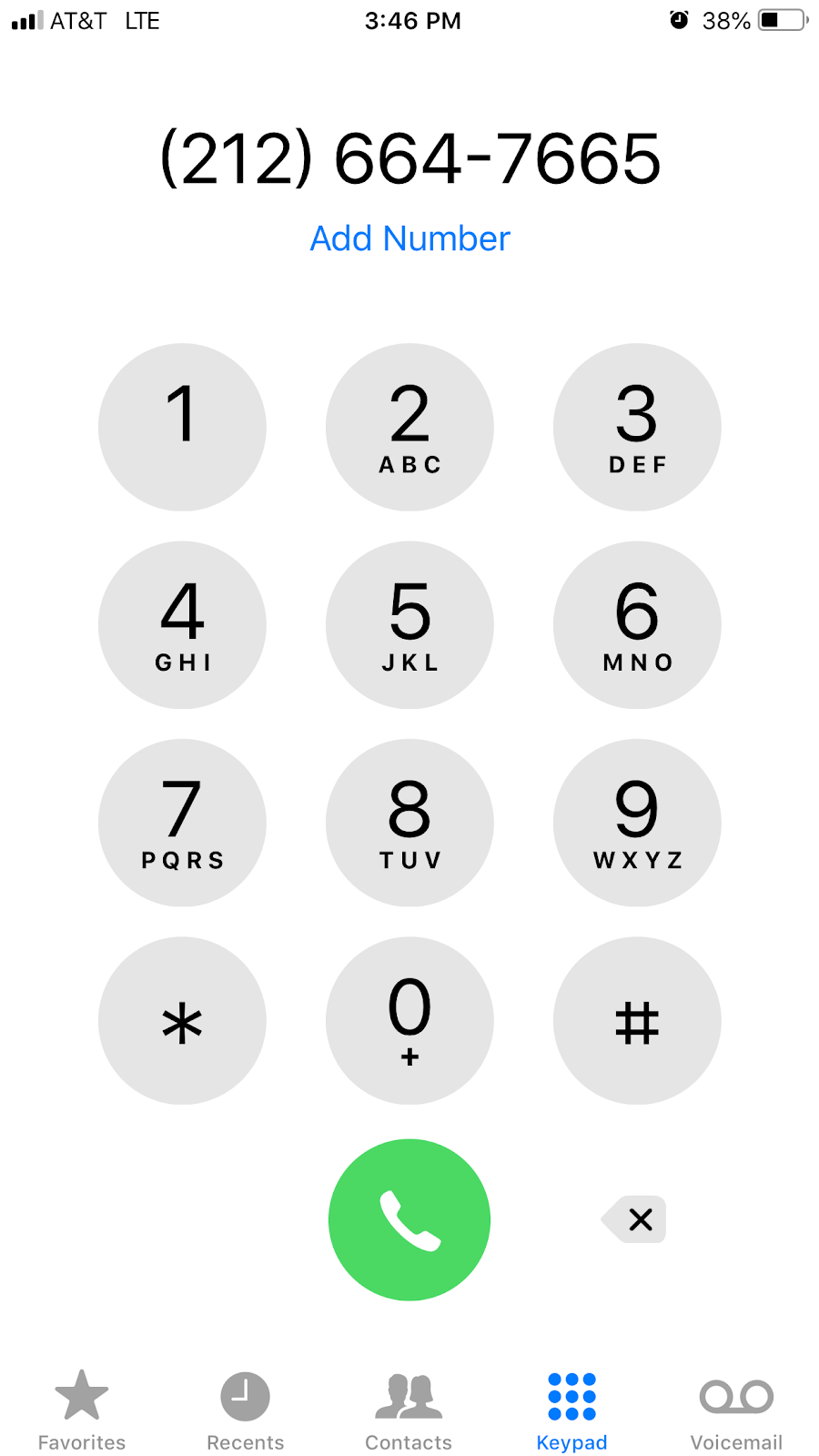
- When you get a chance to talk to them, don’t call attention to the fact that you haven’t heard from them, or that they ignored you. Instead, start the conversation from scratch and they will be more likely to engage with you.
- Vary your contact attempts by calling at different times of the day and different days of the week. Maybe there is a reason that calling at 3 pm every Tuesday isn’t working; that person might have weekly staff meetings at that exact hour or a yoga class they attend.
5. When Should You Stop Following Up?
You’ll get to a point in your follow up where days, weeks, and even months go by without getting a response. During a long stretch of not receiving a response from a prospect, it may seem like all hope is lost.
The best thing you can do is to keep following up and continue to try new ways of getting a hold of them. If email isn’t working for you, try using the phone, messaging them on LinkedIn, tweeting at them, leaving a voicemail, sending a physical item in the mail, or even following up in person. Make sure that you use a good CRM for sales to keep track of all of your activities.
You can also try to get their attention by getting in touch with someone else at the company who is below, above, or equal to them in seniority within their department.
6. How to Manage Lots of Prospects at Once
When you’re dealing with a lot of prospects within your pipeline, it’s easy to lose track of who you need to follow up with. With CompanyHub’s follow up suggestions feature you can get intelligent suggestions from your CRM on who you should follow up with and get reminders on when you should make contact. This sales automation feature will help you stay on top of your pipeline and convert more leads into sales.
Wrapping Up
When you’re writing a follow-up email after no response from your prospect, the main thing you have to remember is that every follow-up attempt should be an effort to move the sale forward. In every email, do something that gets the prospect’s attention, demonstrates the value you have to offer, and make it easy for them to respond. Remember – time kills deals so the quicker you can get a non-responsive prospect to re-engage, the better.
Conclusion:
Overall, by integrating all of the above steps, you will find that your pipeline will explode with potential. Exert good judgement when deciding which and how to apply the various recommended steps to take. When you’ve chosen the appropriate steps for your business, execute each with precise attention, as to avoid careless mistakes. Using each of these at appropriate methods listed above can help you to increase your meeting book rate within 30 days.




